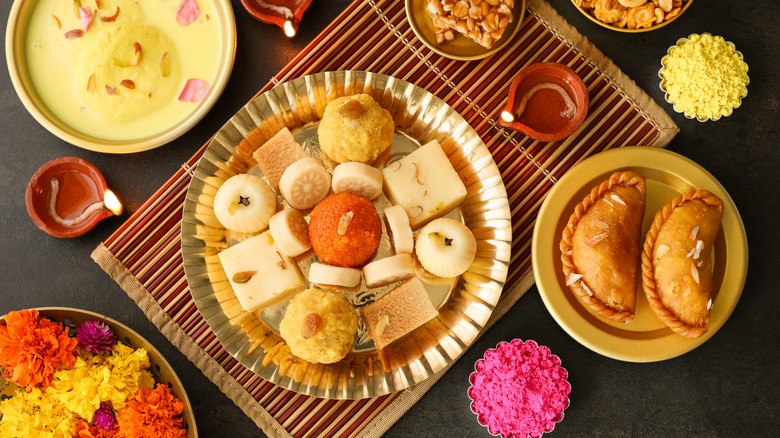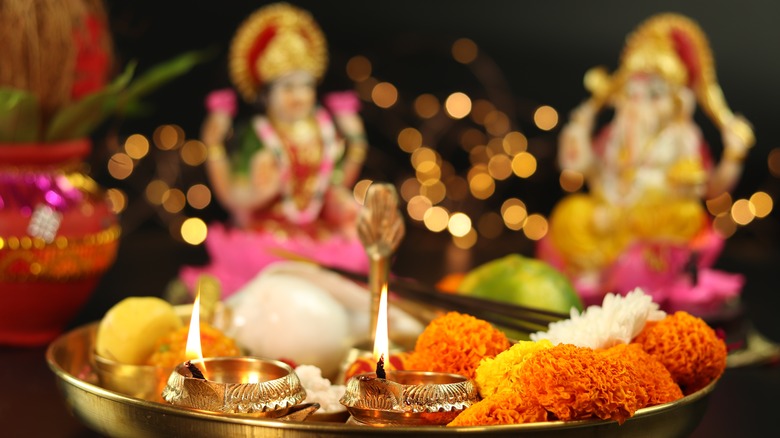The Cultural Reason Sweets Are Savored On Diwali
As one of the biggest holidays in India and the surrounding areas, Diwali is celebrated by roughly over a billion people each year. The festival lasts five days and typically falls toward the end of October or the beginning of November. This year, the main celebration falls on October 31.
With so many celebrants, Diwali means very different things to different people. Hindus, Sikhs, and Jains all have their own traditions. For some, Diwali is a celebration of the homecoming of Lord Rama. For others, it commemorates the birth of the goddess Lakshmi or Krishna's defeat of the demon Narakasura.
But as different as Diwali celebrations can be, they still have many commonalities. Across India and beyond, it's widely seen as a celebration of the triumph of good over evil, light over dark. It's a time to light lamps, exchange gifts, set off fireworks, and participate in religiously-condoned gambling with friends and family.
No celebration is complete without food, and Diwali is all about sweets. While savory snacks have their place, sweets, called mithai, have special significance. They represent purity, joy, the sweetness of life, and good luck for the future. Sweets serve as offerings in religious rituals, but they aren't just for the gods. During Diwali, people share sweets with their friends, families, and communities as a way to spread love and goodwill. By sharing mithai, you're letting your loved ones know that you hope their life is just as rich, sweet, and decadent as the treats themselves.
What are mithai?
In the West, Indian food isn't associated with sweet flavors. Mithai are expensive and labor-intensive to make, so they're rarely served in Indian restaurants. However, sweets are an important part of Indian culinary culture, and they're part of a history that dates back thousands of years. The process of refining sugar was invented in India, likely around A.D. 100.
Nowadays, mithai often come in store-bought boxes — but you'll also find families gathered together to make the treats en masse. Some mithai are region-specific, but others are popular across the entire subcontinent. Ghee, sugar, and milk are standard, as well as flavorings like rose water, cardamom, and nuts. Northern India mithai are often wheat-based. Meanwhile, Southern Indian mithai are often made with rice and sweetened with coconut.
Barfi, which comes from the Urdu word for "snow" but refers to a fudge-like candy, is one of the most popular and versatile treats. Gulab jamun, little spheres of fried dough made with milk and semolina flour, are another common sweet. Once fried, they're soaked in syrup. Jalebi, another deep-fried treat made from fermented dough piped into hot oil, resembles miniature funnel cakes.
If you're interested in trying mithai, check international grocery stores for premade boxes. Alternatively, you can try to make them at home. At the very least, take a moment to appreciate the culture that gave us refined sugar this October 31 — whether you celebrate Diwali or not.

